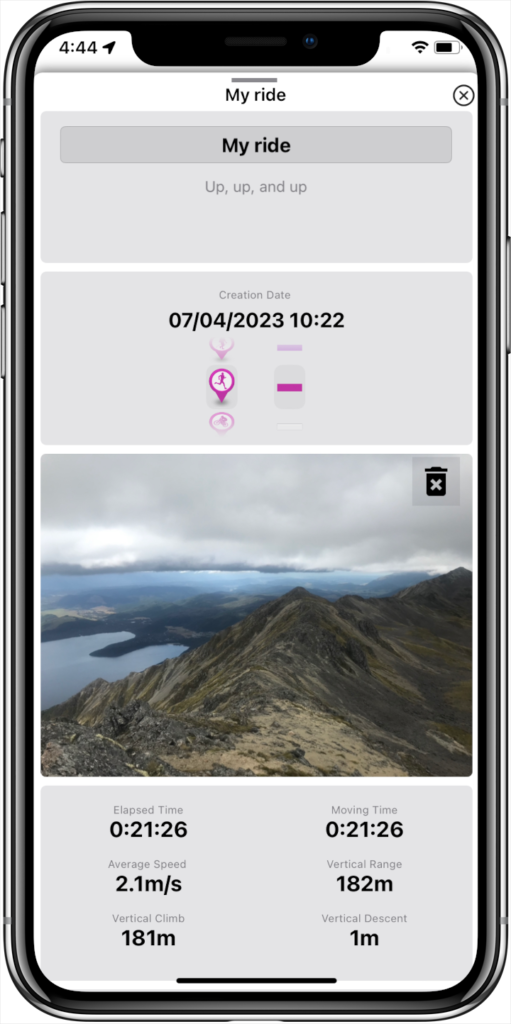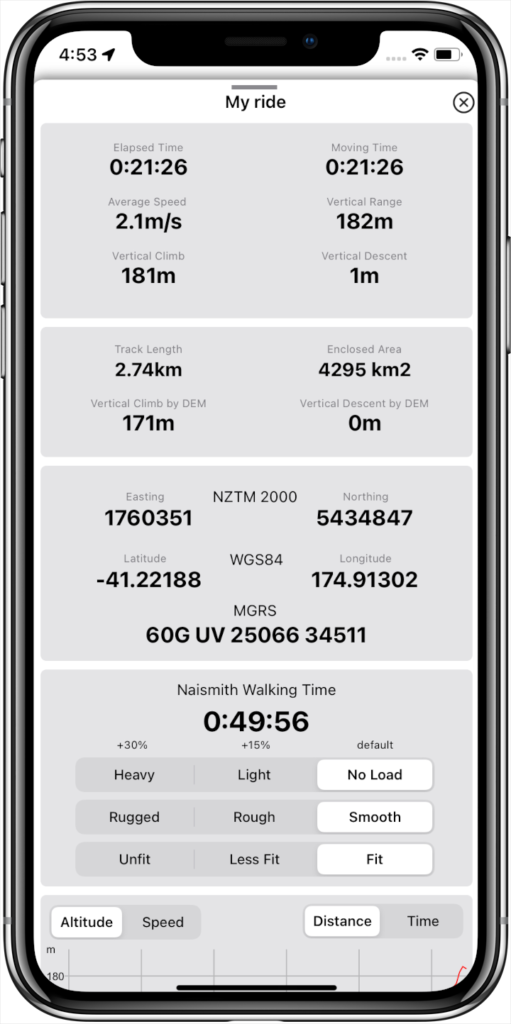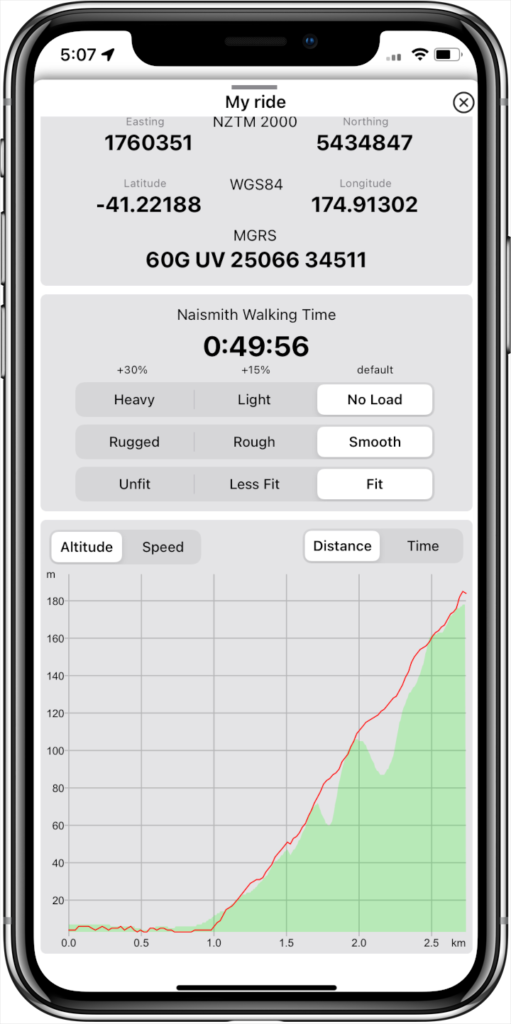Track Details
Select a track or waypoint from the map screen or from the search table to show further details about it and to customise it. Select ‘Details’ (Android), or drag up the track name (iPhone) to expand the full details window. You can also long press on an object to directly open the full details window.

The details that show will depend on whether it is a waypoint, a route, or a recorded track and whether it is a fixed object or one of your own. Details of fixed objects can’t be changed.
A title and description for the object can be added at the top. Below that, the track icon and colour can be selected. You can add an image to the object either by taking a new photo or selecting an image file. Below this further statistics are displayed including elapsed and moving times and average speed (if it is a recording with time points), and the vertical climb and descent (if it has altitude data).

Further details include the linear length of a route or track, the enclosed area (for non-overlapping lines), and vertical climb and descent as calculated by the known ground elevation from the built in digital elevation model (DEM). This may differ from the vertical climb and descent calculated from recorded GPS altitudes due to errors in GPS measurement and limited resolution in the DEM model, or if the track was not recorded at ground level.
The grid reference displayed is for the location of a waypoint or for the starting point for a route or track. It is displayed in NZ trans-mercator 2000 easting and northing (used in LINZ topographic maps), WGS84 global longitude and latitude, and in military grid reference system coordinates.
Naismith walking time is a calculated estimate of the time it would take to walk the track or route based on the length and elevation change of the track. If the settings are all on ‘default’ then the time calculated is according to Naismith’s rule, assuming a walking speed of 5 km/hr and 30 minutes for every 300m vertical gain or descent and is considered to be representative of a fast walking pace over easy terrain. The adjustments for load, track type, and fitness are not official Naismith corrections but can be used to add 15% increments to the calculated time. The descriptors used are qualitative indications only. Adjust as you feel appropriate.

At the bottom of the track details page a graph is displayed. Use the toggles to select a plot of altitude profile or speed on the y-axis, and distance or time on the x-axis. Speed and Time axes are only available if the track has time data.
For altitude, the red line shows recorded GPS altitude data if present. The green profile shows the calculated ground elevation.
